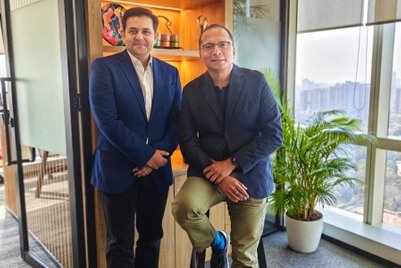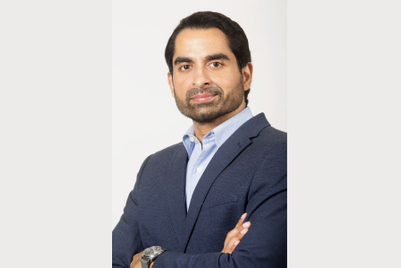
As we’re in the thick of awards season, it’s great to be able to recognise and celebrate the fruits of creative teams’ labour around the world. And while that’s well and good, we also acknowledge that a creative’s trajectory in the industry seems to heavily rely on winning awards. Awards in this case refer to international programmes such as Cannes Lions, D&AD and The One Show.
Sarah Emmanuel-Cheong, general manager at independent agency UltraSuperNew, says that many larger networks tend to set KPIs for creatives that are designed around how many awards are scooped that year. These KPIs are set for creative chiefs, which then trickle down to creative directors and junior creatives.
“Because of this, the benchmark for [an agency’s] success is not whether the clients are happy with the work, but rather, how many awards they’ve won that year. In my mind, that doesn’t make any sense,” says Emmanuel-Cheong. “There have been campaigns that have won Cannes and Spikes but have been just a blip in real life.”
These KPIs may undoubtedly seep into hiring practices as well, even if these indicators don’t make a difference to agency revenues.
However, creative leaders that Campaign Asia-Pacific spoke to for this story emphasise that awards don’t dictate who they hire, and that the industry is moving away from the notion that awards are an end-all factor of a creative’s brilliance.
Bobby Pawar, chairman and chief creative officer at Havas Group India, says that the bigger outfits tend to seek a balance between people who will raise the level of the everyday work and those who will go for the glory. He says that most of the time, it is skewed in favour of the former.
“I personally look for how brilliantly a creative person has solved a problem. Awards are the cherry on top,” says Pawar.
He adds, however, that it’s a good thing when a creative wins big international awards consistently rather than those who win just once. “It means you have done the kind of work that has won the respect of some of the best creative folks in the business. And if you have done it consistently, for at least a couple of years, it proves you are not a flash in the pan. Obviously, that makes you more valuable,” he says.
A blend of both ‘everyday creatives’ and ‘superstar creatives’ is an issue that Emamnuel-Cheong brings up, as it tends to put creatives in a box. She says that when a young creative wins an award, they might be set for a promising career thereon. But those who don’t win awards in the early stages of their career might be relegated to a future of churning out social copy and banners.
“If all the actual ‘superstar creatives’ are doing award-winning work, and 80% of the work that is revenue-generating for the agency is grunt work done by the ‘everyday creatives’, that’s not good,” she says. “It perpetuates a system that doesn't help creatives who are not award-winning.”

Barbara Humphries, executive creative director at The Monkeys, says that hiring the right fit and working style for the company trumps awards. To gauge if a candidate is the right fit, she notices things like one’s enthusiasm, energy, and ambition. This especially applies to younger creatives who may not yet have a chance to win awards.
“You can tell when somebody has the drive to do brilliant work that may ultimately result in awards,” says Humphries, who is also a jury member at Cannes Lions this year in the direct category.
“Somebody might have also won an award but not done anything for a while. They could have hit their stride or maybe they’re not as driven as they once were. So it's important to find out what the person's story is and the journey they’ve been on.”
From a judge’s perspective, she says that awards are nevertheless a great way of showing what a person can produce, and whether their thinking is clear, concise, single-minded and powerful to the point that their ideas can transcend international borders.
“It's good to see evidence of thinking rather than just evidence of winning.”
—Barbara Humphries, The Monkeys
Awards are also sometimes used as a marker for a creative to get promoted, or in the case of Asian creatives, transferred to a Western market. Winning at Cannes can prove a milestone for a creative, and their lives can turn around on the basis of just one award-winning campaign.
“An award is the difference between somebody being completely unknown in a particular area and then suddenly everybody knowing their name,” says Humphries. “So rightly or wrongly, it does give people that level of fame. And for [leaders], it gives them a shorthand way of understanding what [a candidate] is capable of especially if they’re from a different region or if they don’t have the ability to spend a lot of time with them.”
Humphries also evaluates a candidate’s potential based on work that hasn’t lived to see the light of day. Sometimes, the ideas that die—for any number of reasons—are the best ones, and a good way for her to judge work that a creative is passionate about.
“Some of the most powerful work doesn't necessarily pick up at Cannes, and some of the most effective work that makes a positive difference to brands can be more slowly built over the years,” she adds.
Omar Sotomayor, executive creative director at Edelman Singapore, says that it’s important not to have “tunnel vision” when hiring creatives by merely counting the “number of shiny trophies” one has, and to instead focus on a creative’s portfolio which more accurately tells one’s story.
[A portfolio] shows you the type of creative you are, the challenges you’ve experienced, the work you’ve produced, and the best work that you’re choosing to present,” says Sotomayor. “If you have an award-winning campaign in your portfolio, that’s good. But then I might check your role in that campaign. I'm trying to give a fair chance to everyone.”
Similar to Humphries, Sotomayor echoes that awards are a good way for creatives to make a name for themselves, or for head-hunters to scout for talent via credit lists.
"Award shows are like a more powerful LinkedIn. It does help to stretch your network. But it shouldn't be what the agencies look for when they're trying to close a hire.”
—Omar Sotomayor, Edelman
He stresses that some qualities he look out for are leadership skills, the ability to manage large projects, and client-facing communications skills.
Abel Tan*, a Singapore-based senior creative at a large network tells Campaign Asia-Pacific on the condition of anonymity, that not winning any internationally recognised awards at this stage of his career has not hindered his chances of getting a call-back, but it has avoided him being taken seriously at larger networks.
"The ones that call back are always the mid-size agencies who are looking for diamonds in the rough. They can’t compete with fat pay checks afforded by the big networks so they have to look at lesser-known creatives, such as people like me who haven’t gotten a metal on the big stage," says Tan. "Let me put it this way, I’ll never be considered for a role at any of the so-called top agencies."
Another factor is clients being open to entering awards. In this region, clients may also be less willing to reveal business numbers in case studies, which could limit award opportunities for Asia-based creatives. Emmanuel-Cheong adds that Asia-based awards don’t tend to be internationally recognised, aside from Spikes Asia.
There’s also the much-talked-about issue of the diversity of jury members at international awards, which don’t always consider intersections such as language and cultural nuance.
“From an internationally recognised standpoint, Spikes is the only one that has Asian representation,” says Emmanuel-Cheong.
"When you go to D&AD or Cannes, they're all purely based on the Western market. If you're lucky, you might have one token Asian guy, probably based out of LA. Well, obviously, [Asian] work is not going to make it because no one’s going to get it."
—Sarah Emmanuel-Cheong, UltraSuperNew
For instance, she picks out this Stayfree campaign from India which shows fathers talking to their daughters about periods with an aim to eliminate stigma associated with periods in India.
“A campaign like this might not be ground-breaking in the West, but you might not understand how much of a big deal it is in India if you’re a white guy sitting in the US,” she says.
Earlier this year, Cannes Lions was called out by a group of Brazilian creatives for failing to meet industry standards around diversity and inclusivity. Last year, the organisation was called out by Abraham Abbi Asefaw, a former dean at the Cannes Lions Roger Hatchuel Academy learning programme for young talent, for not replacing his seat as the only dean of colour with another person of colour. To improve on feedback on its lack of diversity, Cannes hired The Unmistakables as its DE&I specialist consultancy to conduct an independent review.
Humphries says that international awards programmes have made conscious efforts to make their juries more diverse as cultural nuance is a huge factor in the judging process.
“[Awards programmes] have put more emphasis on asking people to explain culturally significant things about an idea or the audience for which it’s intended. It does help to have this extra rigour,” she says. “But ideally, you want range of people in juries. You want somebody in the room who can talk about why that work was particularly impactful.”
One thing that cannot be ignored—with hiring and promotions entrenched in awards—is the continuous production of ‘scam’ work, which Havas’ Pawar describes as “the shameless pursuit of covering yourself or your agency in glory”.
“As with anything, there must be some principles that all of us must abide by. All work may not be initiated by the client, it could be a proactive effort by the agency. But it has to be backed by a real client and a real budget,” says Pawar.
Humphries echoes Pawar’s sentiment and says that purpose-related campaigns must be able to tie back to clients’ real vision.
She says: “There's always going to be work that's created with the intention of being famous, but it’s about making sure that it actually does what it sets out to do in terms of the client or the person paying for it.”
*Campaign Asia-Pacific has used a pseudonym for Abel Tan. This article first appeared on CampaignAsia.com


.jpg&h=334&w=500&q=100&v=20250320&c=1)
.jpg&h=334&w=500&q=100&v=20250320&c=1)


.jpg&h=334&w=500&q=100&v=20250320&c=1)


.jpg&h=334&w=500&q=100&v=20250320&c=1)
.jpg&h=334&w=500&q=100&v=20250320&c=1)





.jpg&h=268&w=401&q=100&v=20250320&c=1)
.jpg&h=268&w=401&q=100&v=20250320&c=1)


